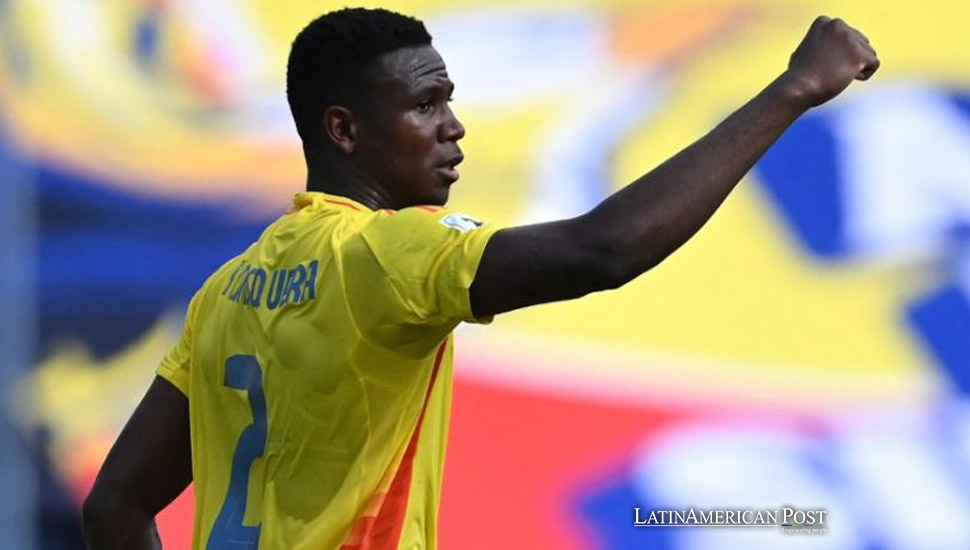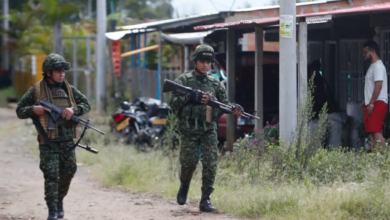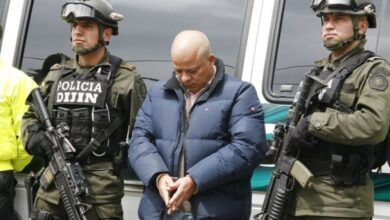Colombian Yerson Mosquera’s Season-Ending Injury and the Impact of Medial Collateral Damage on Soccer Players

Colombian soccer player Yerson Mosquera will miss the rest of the season due to a severe knee injury. The Wolverhampton Wanderers defender damaged his medial collateral ligament (MCL), an injury that has sidelined many athletes and altered their careers.
A Season-Ending Knee Injury
Yerson Mosquera, the Colombian defender for Wolverhampton Wanderers, faces an extended period on the sidelines after sustaining a severe knee injury during Wolves’ 3-1 defeat to Aston Villa. Mosquera, who had established himself as a key player following his move from Villarreal, was stretchered off the field after suffering damage to his medial collateral ligament (MCL) and lateral cruciate ligament (LCL). His injury will require surgery, ruling him out for the season.
The club’s medical team, led by Phil Hayward, confirmed the extent of the injury and announced that surgery is planned in the coming weeks. “Yerson has a long recovery period ahead, and we will be supporting him throughout his rehabilitation to ensure a successful return to competition,” said Hayward. The injury is a significant setback for Mosquera, who enjoyed a breakthrough season in the Premier League.
Understanding Medial Collateral Ligament (MCL) Injuries in Soccer
MCL injuries are unfortunately common in high-impact sports like soccer, where rapid direction changes and collisions can put significant stress on the knee. The MCL is a crucial ligament on the inner side of the knee, providing stability and preventing excessive side-to-side movement. This ligament can severely restrict an athlete’s ability to run, pivot, or even walk when damaged.
The severity of MCL injuries can vary, ranging from minor sprains to complete tears. In Mosquera’s case, the injury is severe due to the involvement of the MCL and LCL. This combination often requires surgery and can lead to a recovery period of six to nine months.
Due to soccer’s physical nature, players are especially vulnerable to MCL injuries. Tackles, sudden turns, and high-speed movements frequently cause ligament damage. The injury is typically caused by a direct blow to the outer knee or an awkward twisting motion during play, similar to what Mosquera likely experienced.
Famous Soccer Players’ Recovery Stories
Injuries to the MCL have impacted the careers of several high-profile soccer players, with varying outcomes. For some, the injury marked a turning point in their playing career, while for others, it was a temporary setback from which they made a successful recovery.
One notable case is Brazilian forward Ronaldo, who suffered multiple knee injuries, including MCL damage. Despite the severity of his injuries, Ronaldo triumphantly returned to the pitch, even winning the FIFA World Cup in 2002. His recovery, though grueling, demonstrated that with the proper treatment and rehabilitation, it’s possible to regain top form.
On the other hand, players like Jack Wilshere, once a rising star for Arsenal, saw their careers hindered by recurring knee injuries, including MCL damage. While Wilshere returned to play, he could never fully recapture the dynamic abilities that initially made him a standout.
The recovery process for athletes with MCL injuries is long and requires physical and mental resilience. While some players successfully return to their previous performance levels, others may find it difficult to regain their confidence and agility on the field, which can have lasting effects on their career trajectory.
The Long Road to Recovery
For Yerson Mosquera, the journey back to full fitness will be challenging. Following surgery, he will undergo an extensive rehabilitation program to restore strength, mobility, and stability in his injured knee. The recovery process for MCL injuries typically begins with controlled exercises to regain range of motion, followed by strength and balance training to support the knee joint.
Athletes recovering from MCL injuries also need to gradually reintroduce dynamic movements, such as running and cutting, which are essential in soccer. Only after these skills are fully restored will Mosquera be cleared to return to the competition. Rehabilitation can take anywhere from six to nine months, depending on the severity of the injury and the body’s response to treatment.
The mental aspect of recovery is equally important, as long-term injuries can affect an athlete’s confidence. Mosquera must stay mentally strong throughout the rehabilitation process, as setbacks and slow progress are not uncommon. The support of his club, teammates, and medical staff will be crucial as he works toward a full recovery.
Also read: Can Colombia’s James Rodriguez Thrive at Rayo Vallecano?
Wolves have already committed to helping Mosquera through rehabilitation, ensuring he can access the best medical care and resources. With dedication and the proper support, Mosquera has the potential to return to the field more robustly and with more determination than ever. However, the long recovery process means patience will be essential.
As soccer has shown through the experiences of other athletes, the road to recovery from an MCL injury is demanding. Still, players can return to elite-level competition.





